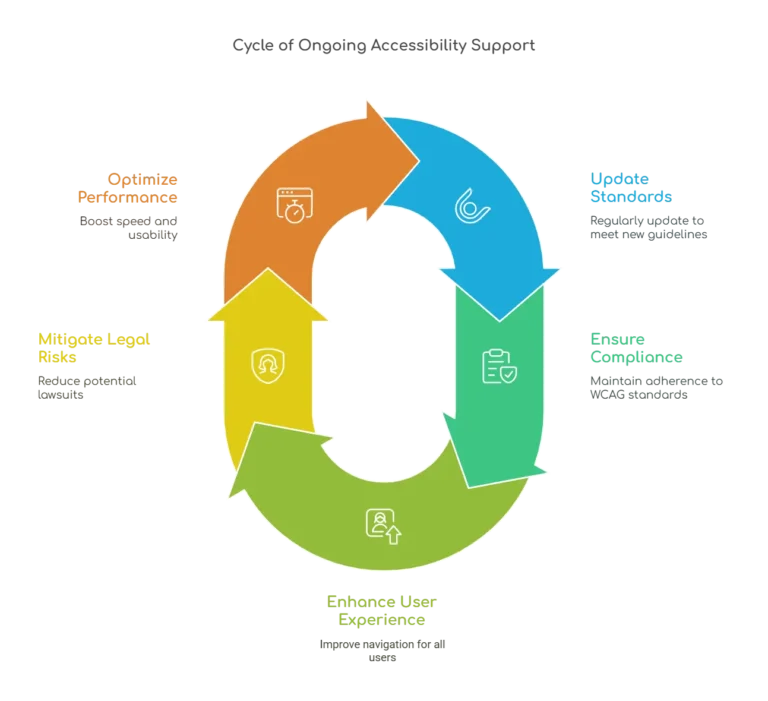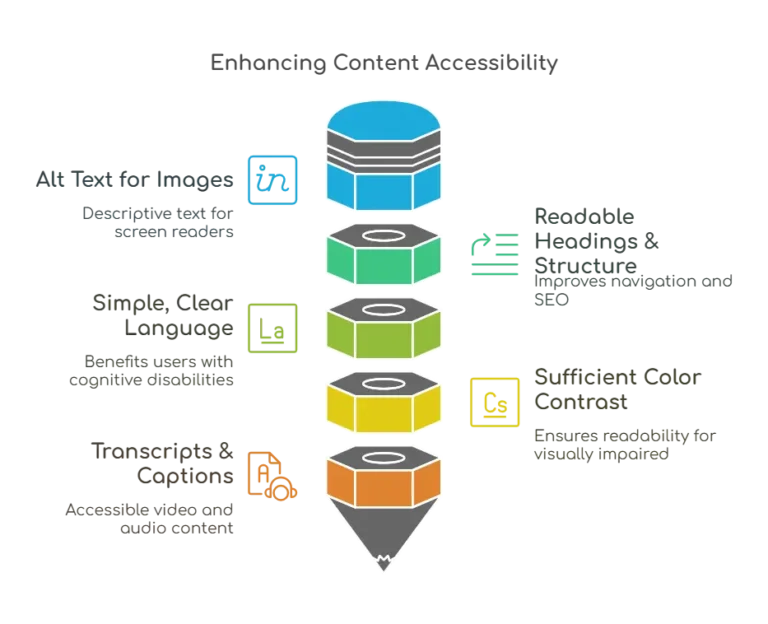Is your website struggling with high page abandonment rates? You’re not alone. When shoppers abandon their carts or leave without making a purchase decision on the product page, it directly affects the revenue generated by the website. When shoppers abandon their carts or leave without making a purchase decision on the product.
When shoppers abandon their carts or leave without making a purchase decision on the product page, it directly affects the revenue generated by the website. Understanding these reasons can help you implement effective solutions to retain more visitors and convert them into customers by improving website navigation, product pages, and reducing product page abandonment rate. So, if you’re ready to reduce bounce rates and boost engagement on your website, including product pages and category pages, keep reading for actionable tips that will make a real difference.
Defining Abandonment

Abandonment Impacts
Abandonment refers to the situation when shoppers leave a website without completing a intended action, such as clicking on the cart button or reaching the cart page. When shoppers abandon their carts or leave without making a purchase decision on the product page, it directly affects the revenue generated by the website. Cart abandonment is particularly significant in e-commerce, with an average online cart abandonment rate of 70% among shoppers. The impacts of abandonment are far-reaching, affecting revenue, conversion rates, user experience, shoppers, and site performance.
When shoppers abandon their carts or leave without making a purchase decision on the product page, it directly affects the revenue generated by the website. High levels of cart abandonment mean that potential sales from shoppers are not being realized. When shoppers abandon their carts or leave without making a purchase decision on the product page, it directly affects the revenue generated by the website. High rates of abandonment can significantly impact conversion rates, cart page, forms, which measure how effectively a website turns visitors into customers. If many users are leaving before converting (making a purchase or completing another desired action) on the product page, cart page, or site abandonment, it indicates that there may be barriers preventing them from doing so.
Content Goals Overview
The level of website page abandonment also reflects on the overall user experience offered by the site and its performance in engaging and retaining visitors. A high rate could indicate issues such as confusing navigation, lackluster product information, or technical glitches that hinder smooth browsing and site abandonment. Moreover, analyzing patterns and identifying areas where users tend to abandon pages, including form abandonment, provides valuable insights for improving different aspects of the site’s content and functionality. For example, if specific product pages have unusually high bounce rates (when users leave after viewing only one page), this might signal that those pages need more compelling content or clearer calls-to-action.
Recover lost visitors! Reach out to Kha Creation for effective strategies against page abandonment.
Understanding Abandonment Rates
Cart and Checkout Rates
Understanding cart and checkout rates is crucial. One of the main reasons for high abandonment rates is unexpected costs during the checkout process. In fact, 48% of shopping cart abandonment occurs because extra costs at checkout are too high. To align content with reducing abandonment rates, it’s essential to enhance user engagement and conversion by providing valuable information that retains visitors.
Analyzing these rates helps identify patterns leading to cart abandonment. By optimizing the checkout process and implementing strategies to encourage completion, businesses can effectively reduce cart abandonment. For instance, simplifying the steps required for completing a purchase can significantly lower cart abandonment rates.
Pre-Product Page Rates
In addition to analyzing cart and checkout rates, pre-product page rates play a significant role in understanding website page abandonment. Identifying patterns in pre-product page abandonment can help optimize the entire purchasing journey on a website. This involves streamlining processes from landing on the site through to product selection, ultimately checking out, and form abandonment.
By analyzing these statistics, businesses gain insights into potential areas where users may encounter obstacles before reaching the actual product pages or experience site abandonment. Implementing strategies such as clear call-to-action buttons or offering incentives like free shipping at an early stage of browsing can encourage visitors to proceed further towards making a purchase.
Site Bounce Statistics
Evaluating bounce rates before product interaction is vital in addressing website page abandonment issues effectively. High bounce rates and form abandonment indicate that visitors are leaving without interacting with any content on your site after arriving there directly from search results or other referral sources.
To improve landing page relevance and appeal, businesses need to ensure that they match visitor expectations based on their entry point into the site—whether through search engines or social media platforms. Enhancing navigation also plays a critical role in guiding users effectively through different sections of your website, thus reducing bounce rates significantly.
Identifying Abandonment Causes
User Friction
User friction is one of the common reasons behind website page abandonment. High bounce rates often indicate that visitors are not finding what they expected or experiencing difficulty navigating a site. To address this, it’s crucial to optimize both content and design for better engagement. This can involve simplifying navigation, ensuring clear calls-to-action (CTAs), and creating compelling content that captures and retains users’ attention.
Implementing strategies to reduce immediate exits is also essential. For instance, offering quick access to relevant information on the landing page can prevent users from leaving without exploring further. By minimizing pop-ups and intrusive ads, you can create a more seamless user experience that encourages visitors to stay longer on your website.
Moderate Interest Visitors
Identifying elements causing friction in the user journey is vital when dealing with moderate interest visitors who might be at risk of abandoning a webpage. Streamlining processes to minimize user effort plays a significant role in retaining these potential customers. By analyzing their behavior through tools like heatmaps and session recordings, businesses can pinpoint areas where users tend to drop off and take steps to rectify those issues.
Enhancing usability for a smoother experience is another effective approach. This could involve simplifying form fields during checkout or improving search functionality so that users can easily find what they’re looking for without unnecessary frustration.
When creating personalized emails for these visitors, showing high-quality images of the products they viewed along with compelling CTAs asking them to consider revisiting those products can reignite their interest and encourage them back onto the website.
Technical Performance Issues
Technical performance issues such as slow loading times or broken links are other common reasons why visitors may abandon webpages despite having moderate interest in the content or offerings presented there. Targeting these specific groups of visitors by providing compelling content and offers tailored towards their interests becomes crucial in retaining them on the site.
Utilizing personalized recommendations based on their browsing history helps create a more tailored experience that aligns with their preferences, potentially reducing the likelihood of abandonment due to technical issues.
Reducing Product Page Abandonment
Address slow loading times and site errors
A key factor contributing to website page abandonment is slow loading times. Users expect websites to load quickly, so optimizing images, minimizing HTTP requests, enabling browser caching, and utilizing a content delivery network (CDN) can significantly improve load speed. Addressing site errors such as broken links or missing images is crucial in providing a seamless browsing experience.
Optimizing website performance by implementing these strategies not only enhances user experience but also reduces the likelihood of product page abandonment due to frustration with slow-loading pages or encountering errors during their visit.
Ensure seamless browsing experience across devices
In today’s digital landscape, users access websites from various devices such as smartphones, tablets, and desktop computers. Therefore, it’s essential to ensure that your website offers a consistent and enjoyable browsing experience across all platforms. By optimizing for mobile responsiveness and ensuring that the website functions seamlessly on different screen sizes, you can prevent potential customers from abandoning product pages due to difficulties navigating or viewing products on specific devices.
Strategies for Cart Retention
Simplifying Checkout Process
Simplifying the checkout process is crucial. By utilizing data-driven personalization techniques, you can offer a more tailored shopping experience. For instance, based on a user’s browsing behavior, you can suggest products they are likely to be interested in purchasing. This not only enhances user experience but also increases the likelihood of completing a purchase.
Enhancing cross-selling and upselling opportunities during the checkout process can significantly reduce cart abandonment. By recommending complementary or upgraded products at this stage, you provide customers with additional value and potentially increase their order value.
For eCommerce marketers dealing with high cart abandonment rates, it’s essential to recognize that around 3% of abandoned carts result from confusing product information. Therefore, streamlining the checkout process by offering relevant suggestions and minimizing confusion is paramount in reducing website page abandonment.
Offering Incentives
Another effective strategy for addressing website page abandonment is offering incentives to encourage users to complete their purchases. Simplifying steps required for completing a purchase reduces friction in the buying process and makes it easier for customers to finalize their orders swiftly.
Minimizing form fields and unnecessary distractions during checkouts also plays a vital role in preventing cart abandonment. By keeping the checkout flow concise and focused, customers are less likely to become frustrated or disengaged while making a purchase.
Moreover, providing guest checkout options further streamlines the process for first-time buyers who may not want to create an account before making a purchase decision.
Implementing Exit-Intent Tools
Implementing exit-intent tools on your website enables you to capture visitors’ attention when they show signs of leaving without completing their purchase. One effective way is by using pop-ups or quizzes that appear when users attempt to navigate away from your site without finalizing their order.
By providing discounts or free shipping incentives through these exit-intent pop-ups, you entice potential customers back into completing their transactions. Promoting limited-time offers within these tools creates urgency and encourages immediate action from hesitant buyers who might otherwise abandon their carts indefinitely.
Furthermore, incentivizing sign-ups or social shares through exit-intent tools allows you to build long-term relationships with potential customers while simultaneously reducing immediate cart abandonment rates.
Want to reduce page abandonment and boost conversions? Contact Kha Creation for expert guidance.
Addressing Checkout Abandonment
Streamlining Payment Options
Capturing abandoning visitors with targeted pop-ups can be effective. For instance, offering exit-intent offers like a discount or free shipping can entice visitors to stay or even return later. Another strategy is prompting email subscriptions before the visitor exits, allowing you to continue engaging them through email marketing.
Furthermore, providing diverse payment methods such as credit/debit cards, digital wallets like PayPal or Apple Pay, and even Buy Now Pay Later (BNPL) services can cater to different customer preferences. This flexibility in payment options can prevent potential customers from leaving due to their preferred method not being available. Minimizing the number of steps in the payment process ensures quick and hassle-free transactions for customers.
Trust Signals and Assurances
In addition to trust signals and assurances, incorporating trust badges and security seals on the checkout page can reassure customers about the safety of their transactions. These visual cues create a sense of security and trustworthiness that may alleviate any concerns about making a purchase.
Moreover, highlighting clear return policies, product guarantees, and availability of customer support on the checkout page provides reassurance to hesitant buyers. Knowing that they have recourse if something goes wrong with their purchase encourages customers to proceed with their transaction.
Post-Abandonment Email Campaigns
After addressing cart abandonment strategies in the previous section, integrating post-abandonment email campaigns becomes crucial. By sending follow-up emails after an abandoned cart incident occurs, businesses have an opportunity to re-engage with potential customers who left without completing their purchase.
These emails could include personalized recommendations based on the abandoned items or similar products of interest which might prompt them into revisiting your website for another look at what’s on offer.
Preventing Form and Registration Abandonment
Minimizing the number of fields required can significantly reduce the likelihood of users abandoning the page. Lengthy forms often deter users, so streamlining the process is crucial.
One effective strategy to prevent form abandonment is to send personalized follow-up emails after abandonment. By reaching out to users who have left without completing a form or registration, you can remind them about their initial interest and encourage them to return and complete the process.
Another approach is recommending viewed products or offering special incentives. For instance, if a user has abandoned a form related to a specific product or service, you could send them an email highlighting that item along with a special discount as an incentive for completing the registration or form.
Prompting return visits with engaging content also plays a vital role in reducing form abandonment. By providing valuable content on your website that keeps visitors interested and engaged, you increase the chances of them returning and completing any pending forms or registrations.
Social Sign-In Integration
Integrating social sign-in options into your website’s registration or checkout process is another effective method for combating form abandonment. This integration minimizes form fields by allowing users to utilize their existing social media accounts for authentication purposes.
By offering auto-fill options for user convenience during registration or checkout processes, you simplify their experience while balancing data collection needs with user satisfaction. Users appreciate when they don’t have to manually input every detail repeatedly.
Optimize offers Google Analytics integration capabilities which allow businesses quickly understand how their forms can be improved based on real-time data analysis.
Progressive Disclosure Techniques
Progressive disclosure techniques involve gradually revealing information instead of presenting it all at once, contributing positively towards reducing form abandonment rates. Allowing users to sign in using their social media accounts not only simplifies the account creation process but also personalizes experiences based on social profile data.
For example: If a user signs up through Facebook, you can access basic profile information such as name and email address directly from Facebook rather than asking them again in your own form – this makes signing up quicker and easier for new customers.
Simplifying account creation processes through social integration enhances overall user experience while still collecting necessary data needed by businesses.
Leveraging Email for Conversion Recovery
Browse Abandonment Emails
When users abandon a website page, sending browse abandonment emails can help reel them back in. These emails gradually reveal information as users progress, maintaining their interest by unfolding details strategically. By avoiding overwhelming users with excessive information, the chances of re-engaging them are significantly higher.
For instance, if a user added items to their online shopping cart but didn’t complete the purchase, an email could be sent showcasing those particular items or similar products of interest. This personalized approach reminds the user about their browsing history and entices them to revisit the website to make a purchase.
Cart Recovery Sequences
Targeted emails based on browsing history can effectively encourage visitors to return and complete their purchases. Highlighting viewed products or categories of interest in these recovery sequences serves as a gentle reminder of what caught the user’s eye during their previous visit.
Consider this scenario: A visitor was exploring various laptops on an e-commerce site but left without making a purchase. A well-crafted email featuring those exact laptops or related accessories may prompt the visitor to reconsider and finalize the transaction.
Personalization Tactics
Automating follow-up emails for abandoned carts is one way to personalize communication with potential customers who showed initial interest in your offerings but did not convert. Offering incentives such as discounts or free shipping can act as powerful motivators for completing purchases that were left unfinished.
Moreover, providing assistance or support through personalized messages demonstrates care for each customer’s journey within your website environment. For example, offering live chat support directly within an abandoned cart email can address any concerns or queries that hindered completion of the transaction.
To see how we recover more revenue for our customers, take a look at our eCommerce website personalization solutions.
Techniques to Decrease Site Bounce
Improving Load Times
Improving load times is crucial. Research from Deloitte reveals that even a one-millisecond improvement in website load time can make a significant difference. To leverage user data for personalized experiences, businesses can analyze customer behavior and preferences. By tailoring content, recommendations, and offers based on this data, they can create a more engaging user experience.
Customizing communication based on preferences is another effective way to decrease site bounce. For instance, sending targeted emails with personalized product recommendations or exclusive offers based on the user’s browsing history can entice them to stay longer on the site. These tailored approaches demonstrate an understanding of the customer’s needs and interests.
Mobile Optimization
Mobile optimization plays a pivotal role in decreasing website page abandonment as mobile users expect fast-loading websites for better user experience. Speeding up website loading times by minimizing image sizes and optimizing code is essential for retaining mobile visitors. Leveraging caching and content delivery networks further enhances mobile performance by reducing server response times and delivering content efficiently.
To ensure seamless cross-device experiences, businesses must prioritize mobile-friendly design and functionality while eliminating any mobile-specific usability issues that could lead to frustration among users navigating the site via their smartphones or tablets.
Content Relevancy Checks
Prioritizing relevant content across all devices is vital for decreasing site bounce rates. This involves ensuring that both desktop and mobile versions of the website offer consistent information and features without compromising usability or accessibility.
Eliminating any discrepancies between different device versions of the website helps maintain uniformity in user experience regardless of how visitors access the site. Providing a seamless cross-device journey ensures that users are not deterred by inconsistencies when transitioning from one device to another.
Converting Abandoned Visitors into Customers
Regularly Review
Regularly reviewing the relevance and effectiveness of your website content is crucial. By analyzing visitor behavior, you can tailor the content to match their intent, increasing the likelihood of converting them into customers. For instance, if a visitor frequently views product pages but doesn’t make a purchase, consider displaying targeted ads showcasing those specific products.
Updating product information is also essential. Imagine a shopper who abandoned their cart due to outdated or inaccurate product details; this could have been prevented with up-to-date information. This step ensures that visitors are presented with accurate and enticing details about the products they’re interested in.
Tailor Content
Tailoring content based on visitor intent is another powerful strategy. Suppose a potential customer repeatedly visits certain sections of your site related to fitness equipment. In that case, retargeting ads featuring similar products can be highly effective at re-engaging them and encouraging a purchase.
Moreover, leveraging personalized campaigns allows for 100% customization in just a few clicks, making it easier than ever to create tailored content based on individual interactions.
Feedback Loops
Leveraging feedback loops and surveys plays an integral role in understanding abandonment reasons and tailoring retargeting efforts accordingly. By gathering insights from abandoning visitors through surveys or feedback forms, businesses gain valuable knowledge about what may have deterred potential customers from completing their purchases.
Personalizing ad content based on previous interactions further enhances the effectiveness of retargeting efforts. For example, if a shopper added items to their cart but didn’t proceed to checkout, showing them targeted ads featuring those exact items can reignite their interest and prompt them to return for a purchase.
Increasing brand visibility through strategic retargeting is also key. Continuously engaging abandoning visitors with relevant ad content helps keep your brand top-of-mind even after they’ve left your site without making a purchase.
Special Offers
Offering special incentives for return visits can significantly impact conversion rates among abandoned visitors. Gathering feedback directly from these individuals provides invaluable insights into why they chose not to complete their transactions initially.
Conclusion on Combatting Website Page Abandonment
In conclusion, combatting website page abandonment requires a multi-faceted approach that includes reducing loading times, optimizing the user experience, implementing exit-intent popups, and retargeting strategies. By addressing these areas, businesses can recover potentially lost leads and convert them into customers. It’s important to continuously monitor and analyze website metrics to identify patterns of abandonment and make necessary adjustments to improve overall conversion rates. Additionally, providing valuable and relevant content can also help keep visitors engaged and decrease the likelihood of page abandonment. By implementing these strategies, businesses can minimize the impact of website page abandonment and maximize their conversion opportunities.
Summary
You’ve now learned the ins and outs of combatting website page abandonment. From understanding abandonment rates to identifying the causes and implementing strategies for cart retention, you’re well-equipped to tackle this issue head-on. Remember, reducing product page abandonment and addressing checkout abandonment are crucial steps in keeping your visitors engaged. By leveraging email for conversion recovery and implementing techniques to decrease site bounce, you can effectively convert abandoned visitors into customers. Now it’s time to put these strategies into action and watch as your website’s conversion rates soar.
Remember, every step you take to combat website page abandonment brings you closer to retaining potential customers and maximizing your website’s potential. Go ahead and implement these strategies – your website’s success is just around the corner!
Reduce, recover, and convert with our strategies! Contact Kha Creation for effective page abandonment solutions.



